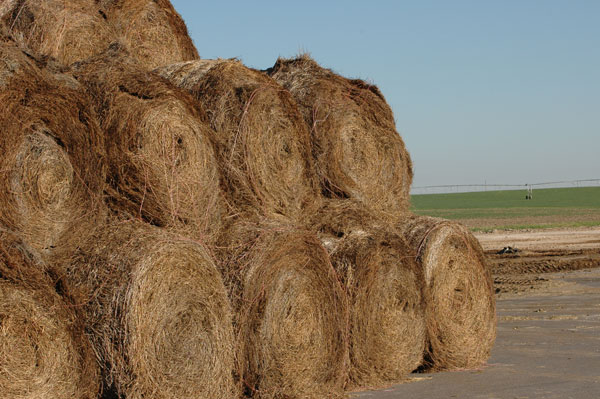How you store round bales makes a big difference in forage quality.
October 10, 2018

Since nutrition is the biggest factor affecting herd health in winter, producers should plan ahead regarding fall and winter forage supplies. Emily Glunk Meccage, forage Extension specialist, Montana State University, says ranchers need to estimate how much hay they’ll need.
“Last year was tough because winter was long. Spring green-up came late and many producers were short on hay by then. Having a contingency plan or some backup hay can help ensure that you don’t run into a wreck and have to put cattle out on pasture earlier than you intend,” she says.
“Eric Summer at the National Ag Statistics Service in Montana said their estimates this spring showed the 5th lowest hay stores since they started recording this. Many ranchers put cattle out on pasture too early, which hurt future hay/pasture production and cattle production.”
This impacts herd health; it’s all tied together.
Hay storage methods are also important to ensure that hay doesn’t lose quality over winter. “We just completed a research project looking at round bale storage outdoors. How you stack the hay affects the quality, and moisture retention. You want to minimize the amount of moisture and mold, because that can affect cattle health and performance,” says Meccage.
“Indoor storage is best (under a roof). Storing it single bale high (in a long snake) seems most consistent regarding retaining quality within, and the pyramid stack is intermediate. We saw some differences between bales that were stored at the top of the pyramid and the bottom.”
But the mushroom stack where the bottom bale is upright and another placed on top of it had the most variability. Top bales had hardly any change in quality, but the bottom bales soaked in moisture that ran off the top bales, significantly decreasing TDN and energy content, and increasing moisture.
“If you are feeding one group of cattle the top bales and another group the bottom bales they might be getting completely different nutrient levels, even if it was all from the same field,” Meccage says.
“We did a two-year study and last year at one of our locations we saw a lot more mold growth in between bales in the pyramid stack than we did the first year. Each year will be a little different in how much moisture bales receive, and when.”
A person could afford to build a hay shed with money lost in damaged hay over just a few years’ time. Money lost in ruined or poorer quality hay, translating into poorer cow performance, or hay that might make a cow sick or abort could have paid for a hay shed.
“When we look at return on investment, it varies depending on how much hay and what type of hay, but a hay shed will pay for itself over several years,” she says.
“A cheaper option that has beneficial effect fairly quickly is just to decrease hay-to-soil contact. A gravel base to stack hay on will greatly reduce moisture damage. Putting hay on pallets, railroad ties or gravel allows for drainage and eliminates moisture wicking up into the hay from wet ground. This helps preserve hay quality,” says Meccage.
About the Author(s)
You May Also Like



